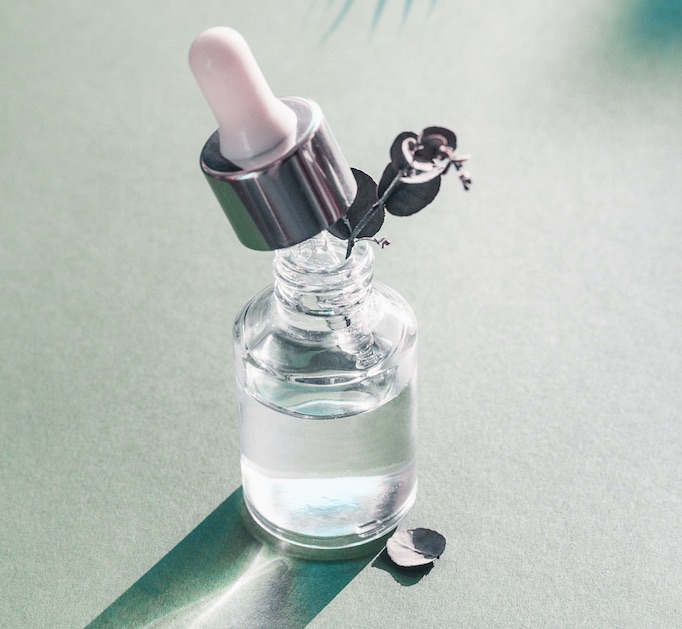Product overload in skincare routines: breaking the vicious cycle

We’re living in an era where the quest for perfect skin is everything and the advice on how to achieve it is everywhere. From influencers boasting about their overflowing beauty cabinets to celebs swearing by the 10-step Korean skincare trend, layering multiple “miracle” products in a bid for glowing skin has become the new norm.
As the high street availability of powerful actives has grown, thanks to affordable beauty companies such as Deciem, Beauty Pie and The Inky List, which have tried to democratise the skincare market, so too has consumer curiosity to try hyped-up ingredients. But these increasingly complex routines have started to have an adverse effect on clients’ skin.
Redness, itchiness, sensitivity, breakouts and peeling are all common signs of a product overload but for many clients this could be a huge revelation, which is why the role of the skincare professional has never been more important.
“This is one of the main issues I’m now seeing in the treatment room,” says Rowan Hall-Farrise, international head trainer and facialist at QMS Medicosmetics. “Clients are accumulating bigger at-home skincare collections, and overstimulation by using active ingredients incorrectly, and far too frequently, is now all too common.”
One of the key drivers behind the issue is undoubtedly an increase in misinformation, especially on social media. With beauty influencers being paid by companies to promote their latest wonder product, it’s now easy for customers to pick something up with an exclusive discount code without it necessarily being right for their skin.
“There’s too much choice and conflicting messaging and it can leave people feeling overwhelmed,” explains Tracy Tamaris, director of the International Institute for Anti-Ageing (IIAA), which distributes vitamin A skincare brand Environ. “Beauty therapists need to educate customers to follow the science, not the hype.”

Who has disrupted the market?
Now, people are switching up their routines a lot and the growth of the online market place has made it easier to order these products, with customers able to get their hands on all sorts of derivatives of vitamins A and C, as well as other actives, while bypassing the professional consultation completely.
Teamed with the rise in over-the-counter brands promising to disrupt the sector by offering effective skincare at accessible prices, it seems that the beauty landscape has changed. These brands have boomed because they market themselves on being honest about what’s in the products, leading with prominent ingredient information on labels so customers can almost become mini scientists and create their own skincare regimes.
“Overall, customers are becoming aware of ingredients that really work, which is a good thing for the industry, especially in terms of being able to empower people to make a difference, but this extra access definitely has its risks,” explains Dan Isaacs, director of research at cosmeceutical brand Medik8.
“I wouldn’t say there’s anything wrong with the quality of these products, it’s more the perception that a £10 retinol serum is just as good as a more expensive version. It’s detracting from the extra steps that research-led brands take to keep these formulas stable with advanced encapsulation and time-release systems. These products are more expensive because companies have to charge for the research and development.”
Advanced facialist Martine Jarman, owner of Skin Genius Clinic in Cheshire, also thinks there needs to be more distinction between different forms of actives because customers won’t always understand the concentration information written on products. “Vitamins A and C come in different derivatives of the pure form but clients won’t necessarily know that or understand that they work differently and can become unstable,” she says.
For example, anti-ageing wonder ingredient vitamin A has many forms – the ones most commonly used in skincare are retinol (the alcohol form), retinoic acid (active form), retinaldehyde (aldehyde form), and retinyl palmitate and retinyl acetate (ester forms) – but clients may not be aware that some are more effective while others have fewer side effects.
Is jargon the issue?
Jarman says the labelling of these over-the-counter brands is another cause for the confusion, with some stating a higher concentration for certain actives than the professional industry norm. She gives an example of one affordable brand that has a 5% retinol product, whereas most cosmeceutical ones will start customers on a 0.25% and work them up to the “high” dosage of 1%.
“Clients see an ‘affordable’ 5% retinol in a high-street shop but don’t understand that the product isn’t pure retinol. This cheaper version is using an ester and it takes more steps for the ester forms of retinol to be converted to the active retinoid acid,” says Jarman. “The more conversions, the weaker the product becomes, which means less irritation, so the strength can then be increased to a much higher percentage without causing retinization.”
She adds: “Since a form of retinol is being used, the company can state 5% retinol on the label, which makes the consumer think they have a better quality product than the 1% cosmeceutical one. It’s very confusing because people believe they’re getting the most active form in a higher concentration but this just isn’t true.”
Getting the skincare cocktail mixology just right is a tough feat, which is why you should be presenting your consultations to clients as your ultimate super power. When you have a new customer who is suffering with an irritation caused by product overload, start by explaining to them what is going on with their skin and why.
“When people use incorrect products and cause problems with their skin they never seem to correlate the two. Instead, they’ll go and buy another new product to sort the problem rather than drop the culprit, creating a vicious cycle,” explains facialist Kate Kerr, who has a clinic in London.
Kerr advises enquiring into the customer’s current regime and paring it back to help calm the inflammation, slowly introducing active products one at a time for a steady approach. The next step is to explain why clients should be conscious of layering active ingredients without a professional’s help.

How do you create a balanced routine?
“Vitamin C and retinol shouldn’t be used together because they can render each other useless. The best thing to do is split them to use at different times – vitamin C in the morning with an SPF on top and retinol in the evening,” says Kerr. Plus, when using retinol, clients tend to think they need to go to the highest strength for effective skincare but the truth is it’s about phasing in results, using lower dosages.
“It should be a cautious and educated approach to skincare rather than this idea of more is better. The best results come to those who take it slowly,” explains Isaacs. “At Medik8, we recommend most people start with retinol at a 0.3% concentration then slowly build it up to 1%, depending on whether their skin is tolerating it well.”
Other actives at a high percentage in serums and moisturisers can also have an adverse effect on the skin, causing rashes and breakouts. “Glycolic acid (the a-hydroxy acid known for its exfoliation properties) used at too high a percentage and too frequently can cause an impaired barrier and peeling,” says Hall-Farrise.
Janine de Costa, education training executive at Dermalogica, advises using a broad-spectrum SPF 15 (minimum) alongside hydroxy acids as they tend to cause sun sensitivity, and when using highly active formulas, “give the skin a good eight to 12 hours between application to monitor the response,” she says.
What are the issues with vitamin C?
Another problem with clients self-prescribing is that they may mix up different branded products, thinking, for example, that all vitamin C serums are the same. It’s one of the biggest myths you’ll have to bust. “Unstable vitamin C in a high dosage may cause skin inflammation and overaction, whereas a stable formulation at a low dosage will give a lovely glow to the skin,” adds Hall-Farrise.
Like retinol, vitamin C has several derivatives that all work in different ways, the main ones being l-ascorbic acid (the purest form of vitamin C), ethylated l-ascorbic acid (highly stable vitamin C) and tetrahexyldecyl ascorbate (lipid-soluble vitamin C). “Pure vitamin C is fantastic but it’s got limitations with stability,” says Isaacs.
“Ethylated l-ascorbic acid is really similar to pure vitamin C but it has a slight change to the molecule which allows it to retain all the power of l-ascorbic while remaining completely stable, so you can put it in a product at a higher concentration. Even with vitamin C serums you need a starter and a more advanced version.”
When a skin irritation occurs, it can be all too easy for clients to lose faith in the actives they’re using but you can turn the situation around, returning the stratum corneum (outermost layer of the skin) back to perfect health. “It’s down to you as the therapist to educate the client about what’s going on in the market and to advise them on ingredient stability,” says Jarman.
“Make this information part of the treatment process – for example, a mini skin workshop at the end of their appointment – where you provide details on the active, how it works, the clinical data and why you stock the brands you do. Then, back this up with ingredient tutorials on your social media pages to help educate further.”


